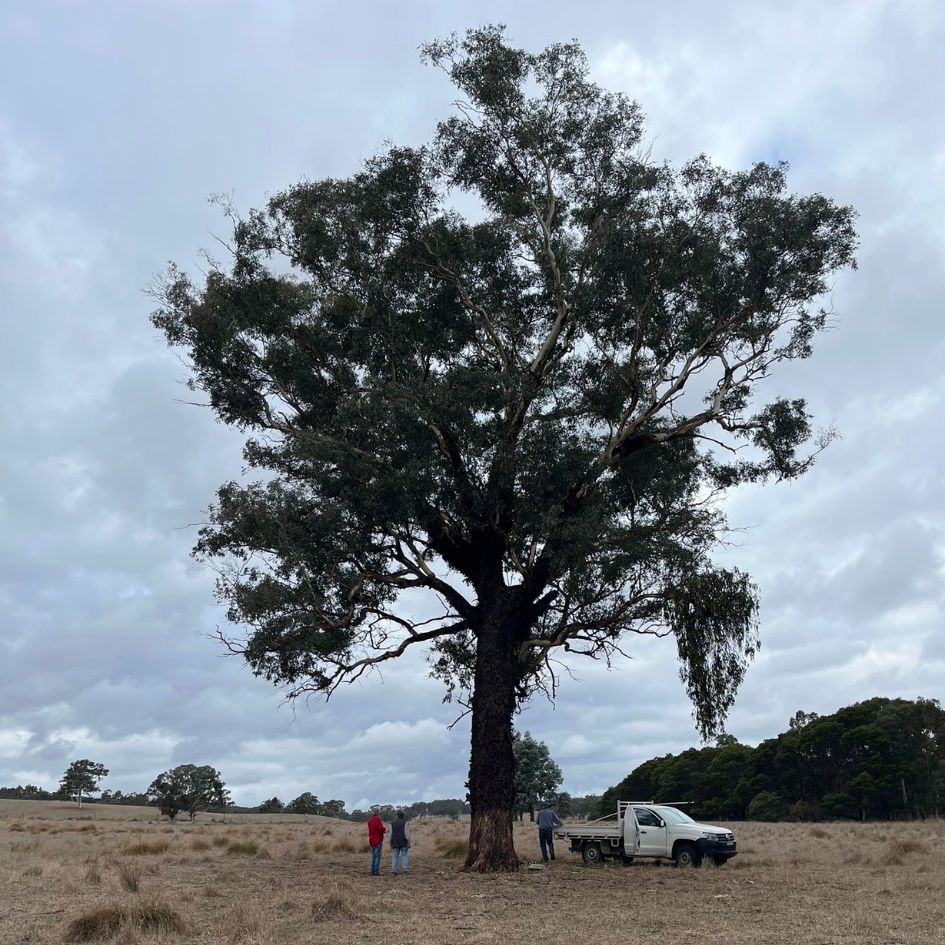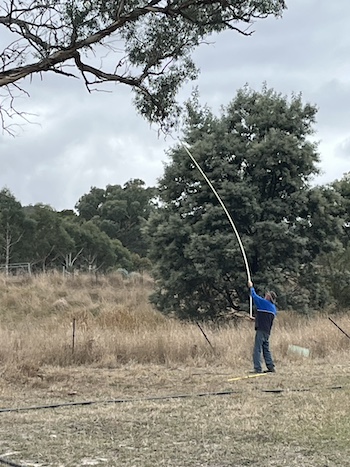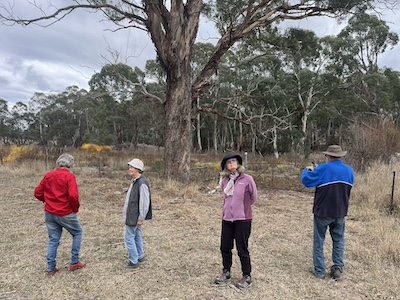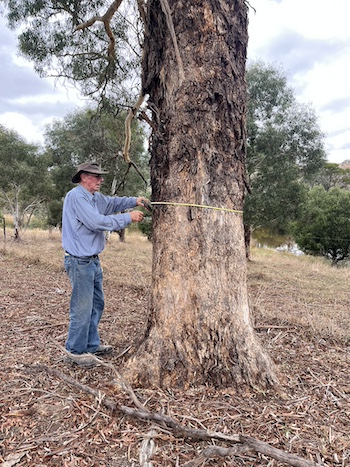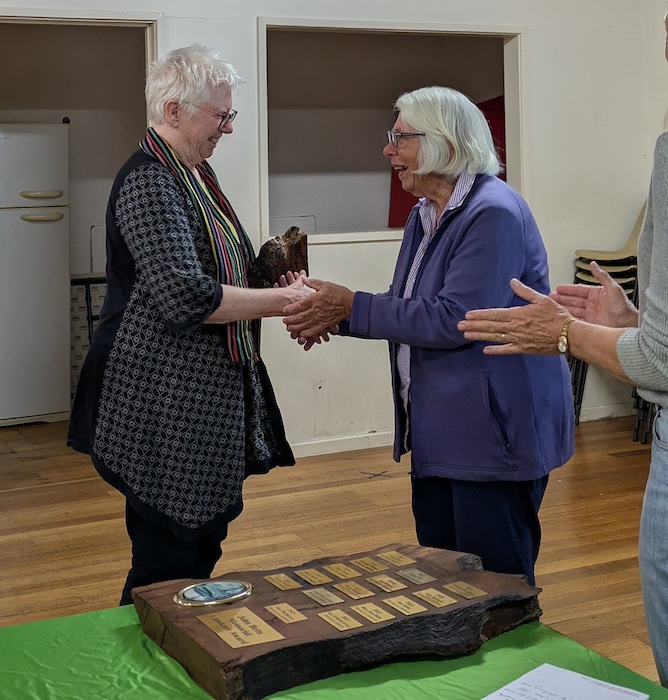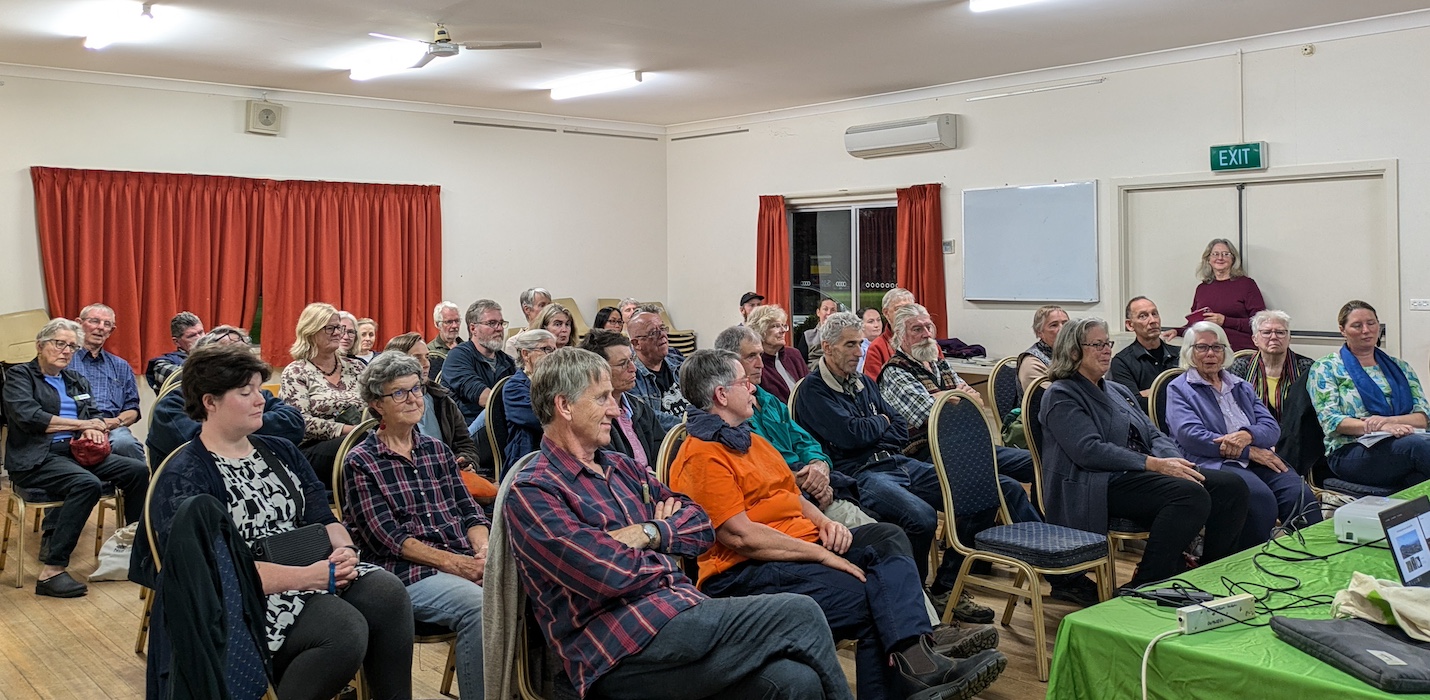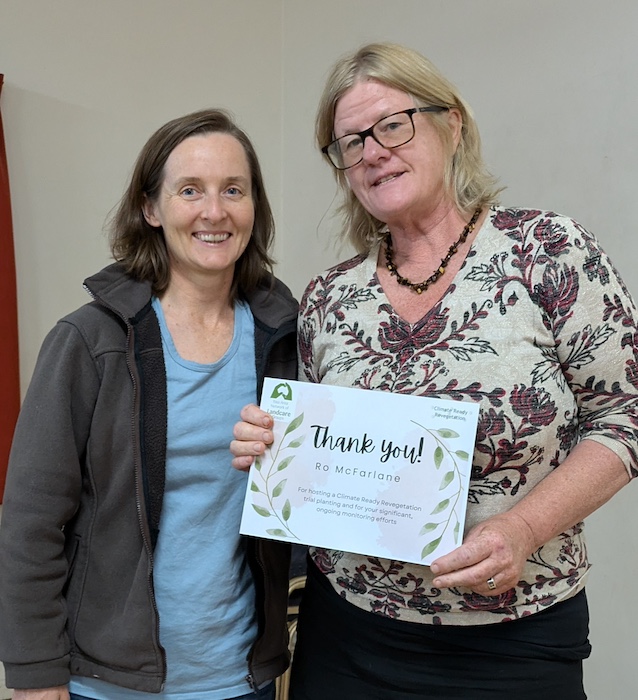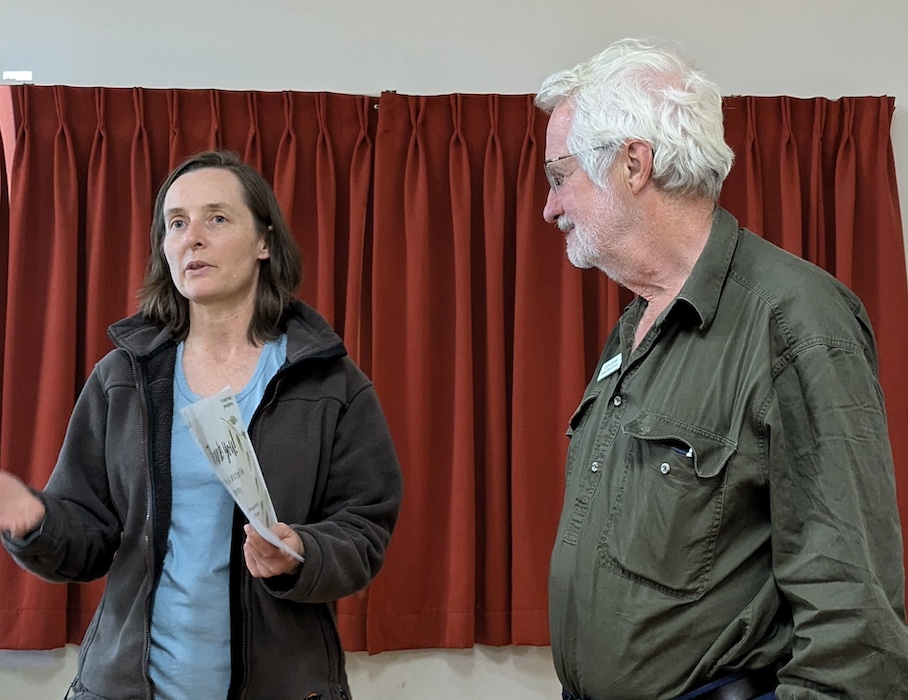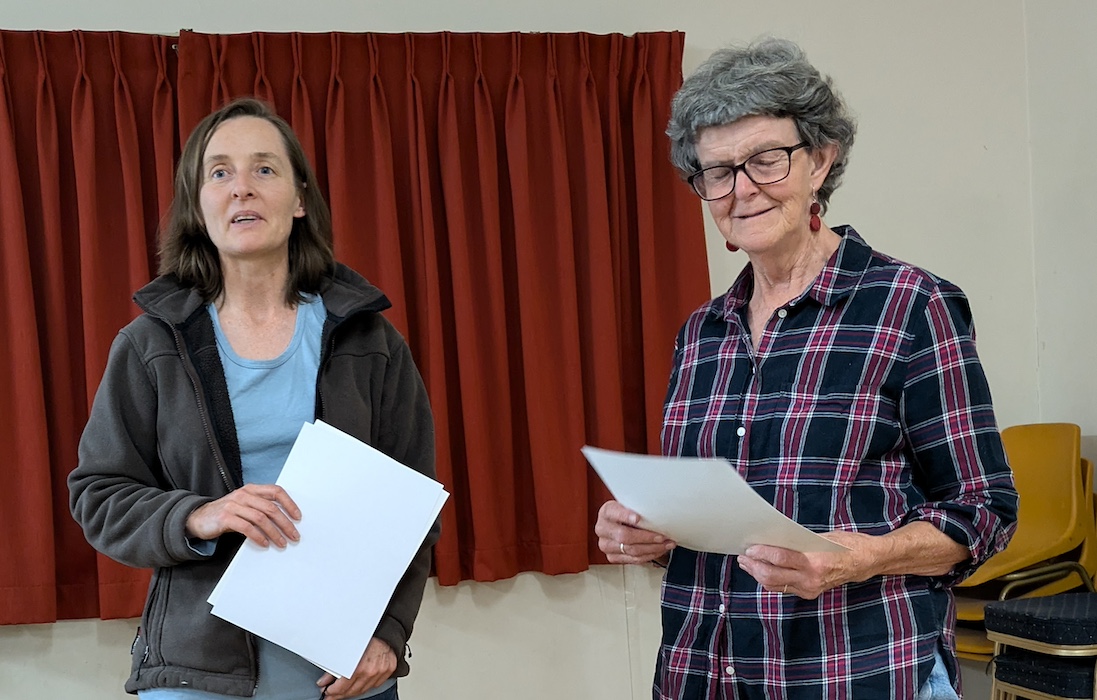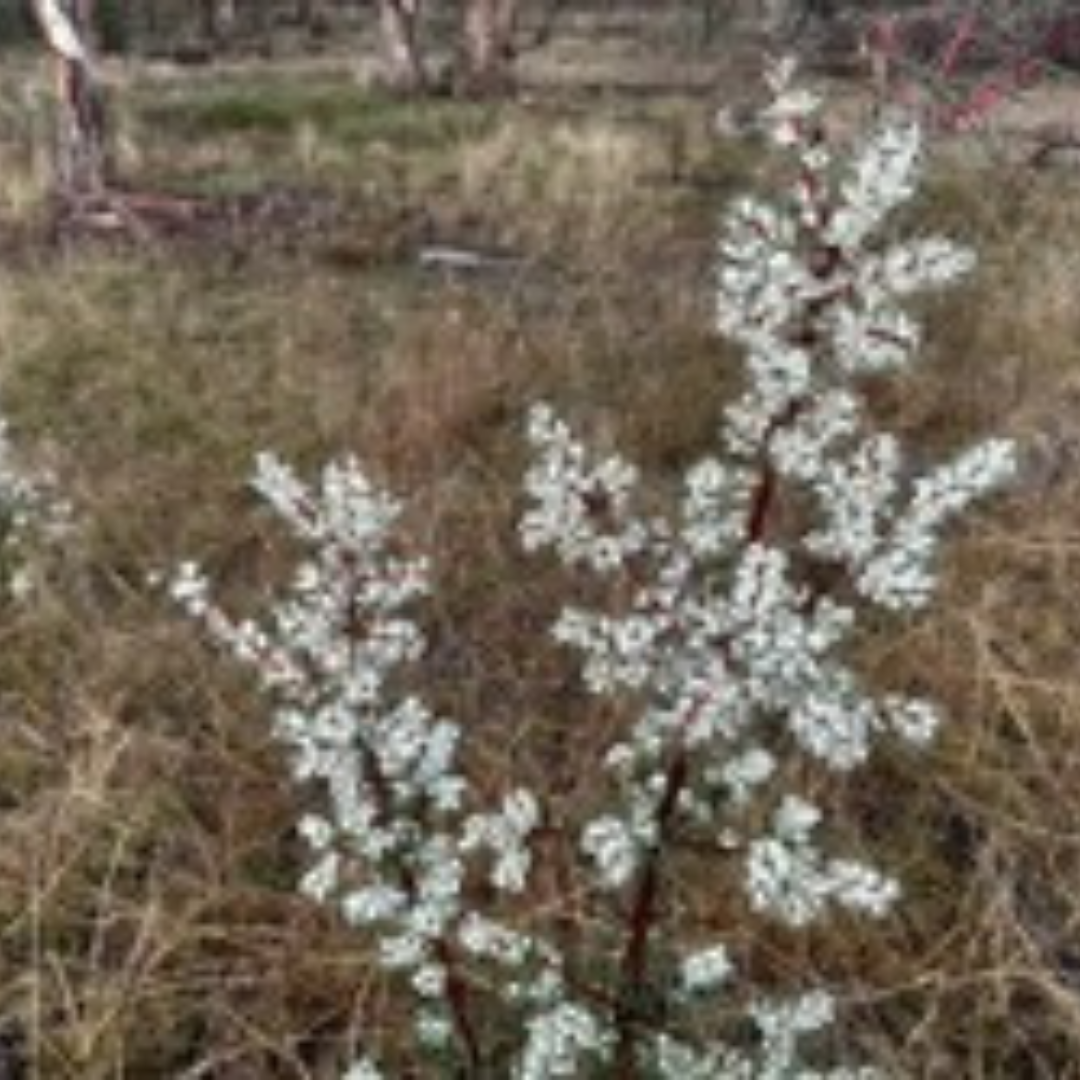7 people braved the morning fog and cold at the Reserve behind the school for the second mini working bee to remove weeds and clean up debris that has blown in from the surrounding area.
It was another successful morning: in one and a half hours we removed: some serrated tussock (the rest will be sprayed at a convenient time) ;15 Briar roses; 5 Cotoneasters; 50 St Johns Worts; 75 Sifton bushes; 4 very large Hawthorns, 10 Cootamundra wattles, and 1 bag of litter. The rest of the serrated tussock and the large blackberries will be tackled later (too much to remove by hand). Unfortunately, some people still use the reserve as a dumping ground. An old 2-seater swing bench seat has been dumped. Please take these items to the tip.
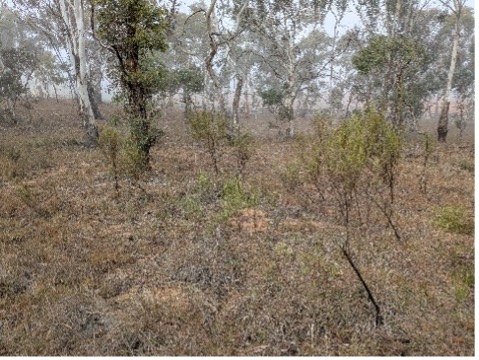
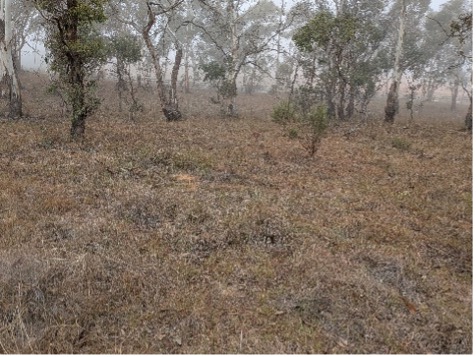
Removal of Sifton Bush (Before & After)
The Reserve is recognised as a valuable original native box gum woodland The Sutton Landcare Group now has permission from Crown Lands and we have started weeding and cleaning up.
It is always amazing to see how much can be done by a small, enthusiastic group of people. We all learnt from each other again and enjoyed a coffee and a chat at the Bakery afterwards.
If you live near the Reserve, or you would like to help Sutton Landcare to make the Reserve a true community asset, with paths for walking, and seating, please roll up your sleeves and join us the next time! It is a great way to learn about our natural environment and how we can care for it, and to meet other people from our community.
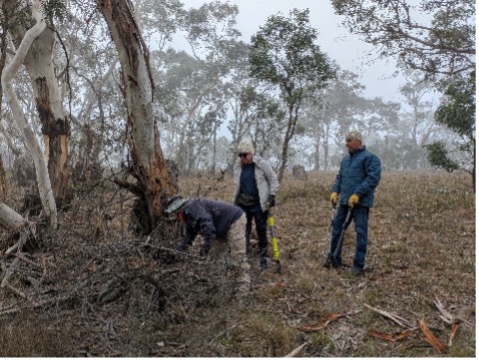
Written by Arnold Dekker, Coordinator Sutton Landcare Group


